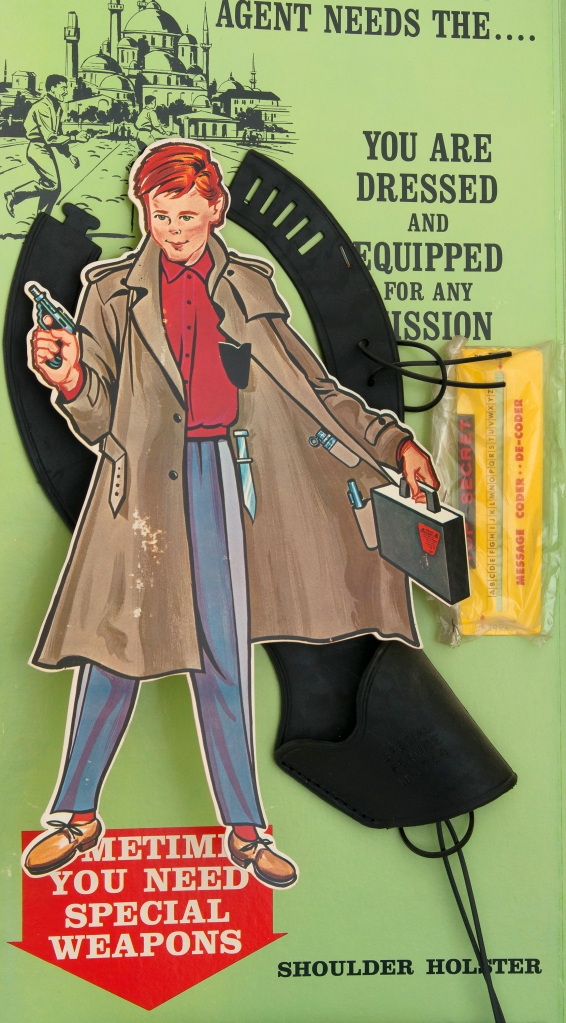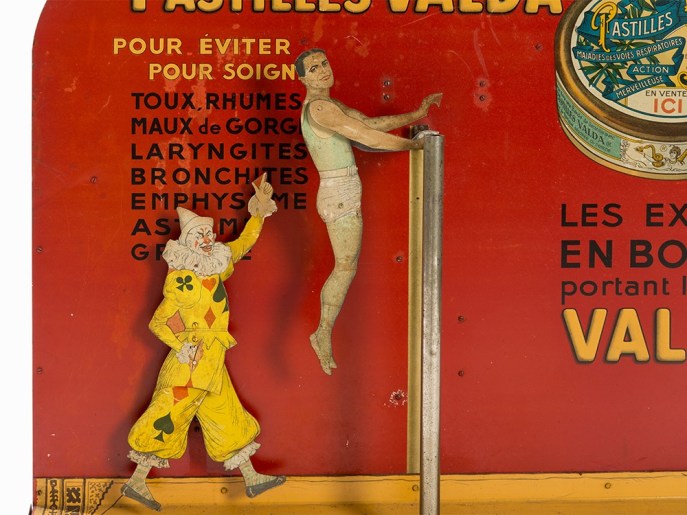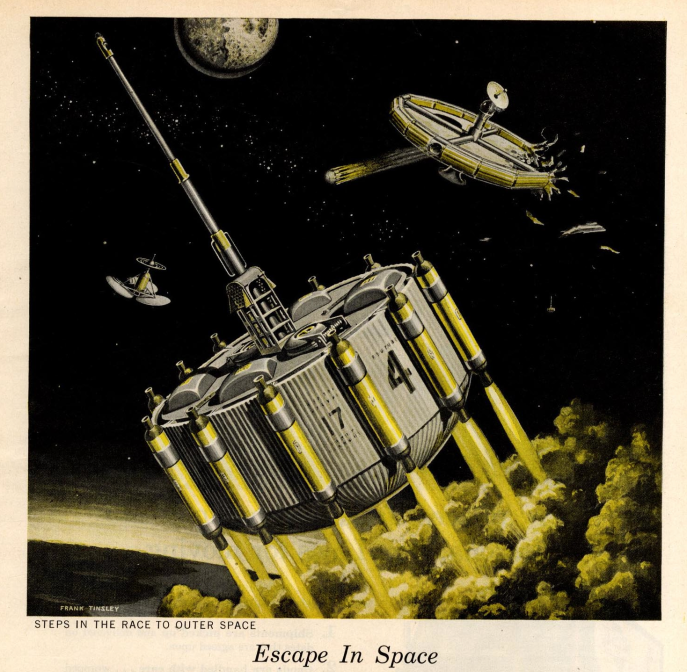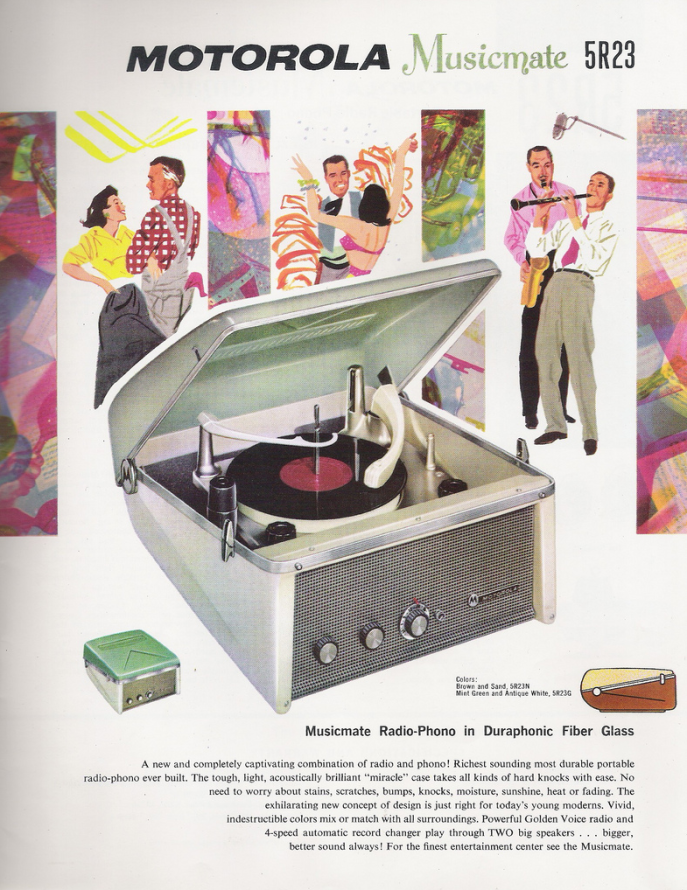
THO-RADIA: The radio-active creme (1933)
THO-RADIA cream, sold according to the formula of Dr. Alfred Curie (not related to the pair of researchers), was prepared with thorium and radium, two elements supposed to erase wrinkles. ‘Science has created THO-RADIA to beautify women. For them to enjoy it. Who wants to remain ugly!‘ Says the slogan of an advertisement extolling the benefits of the product.

THO-RADIA Powder
Dr. Curie does not stop there he also launched THO-RADIA Powder, which contains titanium in addition to radium and thorium. ‘A choice of insulating material, titanium in particular, salts the bottom of the THO-RADIA Powder with a real covering tissue impervious to weather, to devastating radiation, and advantageously replaces the veil of Circassians‘ says Medical Dictionary and Practical Beauty Care published by Tho-Radia.
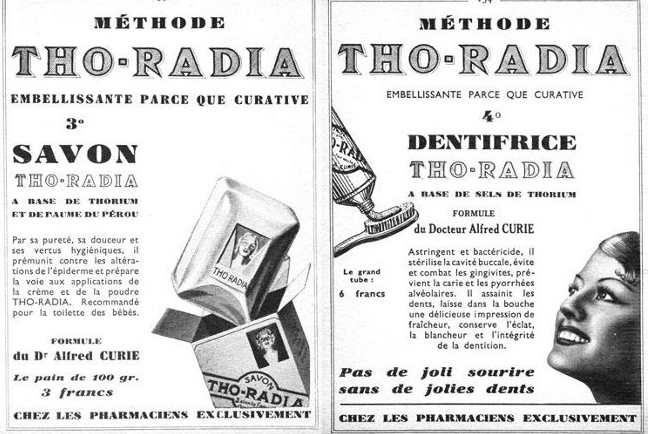
THO-RADIA: soap and toothpaste
‘Logically’ THO-RADIA applies the principle to all kinds of products. Appearing as well as soap, recommended for removing makeup and grooming babies (sic) or THO-RADIA toothpaste. These products were supposed to meet pharmaceutical standards of the time. The mutagenic effects of radiation, in particular the risk of cancer, were discovered in 1927 by Hermann Joseph Muller (1890-1967).

Press Clippings
The pharmaceutical industry is not far behind. There was a plethora of drugs to treat various ailments: Tubéradine (against tuberculosis), Digéraldine (stomach problems), Vigoradine (fight against fatigue), among many other names. Evidenced by the advertisements that appeared in the press of the time.

Radioactive Water
Radioactive water at home was also a success. There were many companies in the sector to rush into this new market. Some homes were even kitted out with radium coffee pots and fountains. It was a simple operation: a capsule of radium salts is housed inside the coffee pots and fountains. On contact with water, the salt released the radioactive fumes.

Revigator
In the same vein, Revigator was a popular brand from 1920 to 1930. Produced by the company Revigator Radium Ore (San Francisco), it was sold to hundreds of thousands of customers in American homes.

Radioactivity For Animals
The animals were also entitled to their radium treatment. Offered for sale in this advertisement is a radioactive food supplement for cattle, cows, horses, pigs and sheep. The farmer could also buy fertilizer…radioactive of course.

Radium Clothing
Wool Oradium was recommended for baby clothes because of ‘the extraordinary effect of organic cell stimulation‘ produced by the radium. In another taste, Iradia proposed underwear, apparently recommended for skiing, as shown in the above advert.

Radium In Chocolate
Burk & Braun asserted that adding radium bromide to chocolate has a ‘rejuvenating effect.’

Radium Fights Grey Hair
Frederick Godfrey, British hair specialist, boasted the merits of a tonic and radioactive treatment for hair. According to this advertisement, Caradium allowed the recovery of the original hair color, while ‘making you look 10 to 20 years younger.’

Radium Is Health – This book published in 1929 extolls the charms of radioactive treatments.
Extract: ‘the miracles produced by radium in the treatment of cancerous tumors have led many scholars to experiment with the action of low doses of radium for the treatment of various skin conditions.’
Original Article Source: Premiere France






